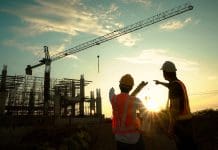Henry Lawson, senior analyst of world market intelligence at BSRIA, discusses a new whitepaper examining demographic megatrends and what they mean for the planning and development of the built environment
Recent decades have seen changes in the human population which are probably unprecedented. Between 1960 and 2016, life expectancy rose in every country in the world. In trouble-torn Ukraine, it edged up three years. In the Maldives, the average lifespan more than doubled.
This resulted from massive advances in healthcare and sanitation. While the immediate effect has been a population boom, a secondary effect has been a dramatic fall in birth rates as more children survive, and as more women are willing and able to enter the labour force.
This combination of higher life expectancies and lower birth rates has seen a rapid rise in the average age of the population, especially in countries where, as from Germany to Japan, the population is now actually falling.
This carries potentially massive consequences for building services. The challenge is approaching from two directions simultaneously. On the supply side, there is more competition for a reduced number of young people entering the workforce.
Seen positively, the young are more likely to have the technical and analytical skills which are increasingly important as buildings become more closely linked to data analytics and the Internet of Things. On the other hand, the most promising potential recruits will face a wide choice of other career opportunities. Building services will need to work to attract them and to keep them.
Technology itself may help to bridge the gap. Research by Oxford University has suggested that a high proportion of building services jobs could be replaced or at least supported by artificial intelligence.
Robots are already deployed for routine tasks such as bricklaying and could also have a role in service and maintenance. Increased automation and mechanisation could also help older workers to continue working for longer in jobs that currently call for a degree of physical fitness.
A further difference is in the types of buildings required and the services provided. In a world competing to attract the brightest younger people, there will be increased incentive to create buildings offering an engaging environment. Smart technology can not only improve comfort but also ensure that younger workers have access to the same smart and intuitive technology that they are used to enjoying in their personal lives.
However, the most obvious development will be at the other end of the age spectrum, with an increase in demand for accommodation for the very elderly. In the UK, the population aged 85 and above has increased eight-fold since 1937 to reach more than 1.5m.
People in this age group are much more likely to suffer from mental or physical impairments than the slightly “younger old”. At the same time, not only do people often prefer to stay in their own homes, but it is also much easier and cheaper for society at large if they do so. This ties into a trend picked up by BSRIA whereby smart technology is increasingly deployed to provide assisted living solutions.
These can, for example, monitor the behaviour of an elderly person using sensors, wearable devices or by tracking the use of appliances. As elsewhere this raises questions about privacy and consent. In Japan, which now has the highest proportion of elderly people in the world, the concept of using robots to offer companionship as well as help to the elderly is also gaining support.
Other demographic changes are likely to affect the kinds of buildings needed and their features. A combination of more people remaining single, higher divorce rates and fewer children per family means that the average household size is falling.
In Germany, for example, while the total population is stable, a fall in household sizes means that by 2034 roughly two million more homes will be needed, which is equivalent to building a whole new city slightly bigger than Hamburg. These homes will also need to be adapted for the lifestyle of smaller households, including a large number of single people. If people living alone feel more isolated then it is at least possible that smarter buildings, aided by artificial intelligence, could provide additional interest and support.
Migration will also be a factor. While globally, approximately 97% of the population still live in the country in which they are born, some countries have seen very high rates of emigration or immigration. The construction industry, whether in London or Dubai, has been particularly reliant on migrant labour.
Actions such as the UK’s likely exit from the EU are aimed partly at reducing migration and the UK building services industry will need to adjust to this, and again, may need to draw on technology.
Buildings and population will continue to have a massive impact on each other.
For further information please download the Megatrends: Demographics Whitepaper here.
Henry Lawson

Senior analyst, World Market Intelligence
Tel: +44 (0)1344 465600
Twitter: @bsrialtd
LinkedIn: bsria
Facebook: BSRIA
YouTube: BSRIALtd














